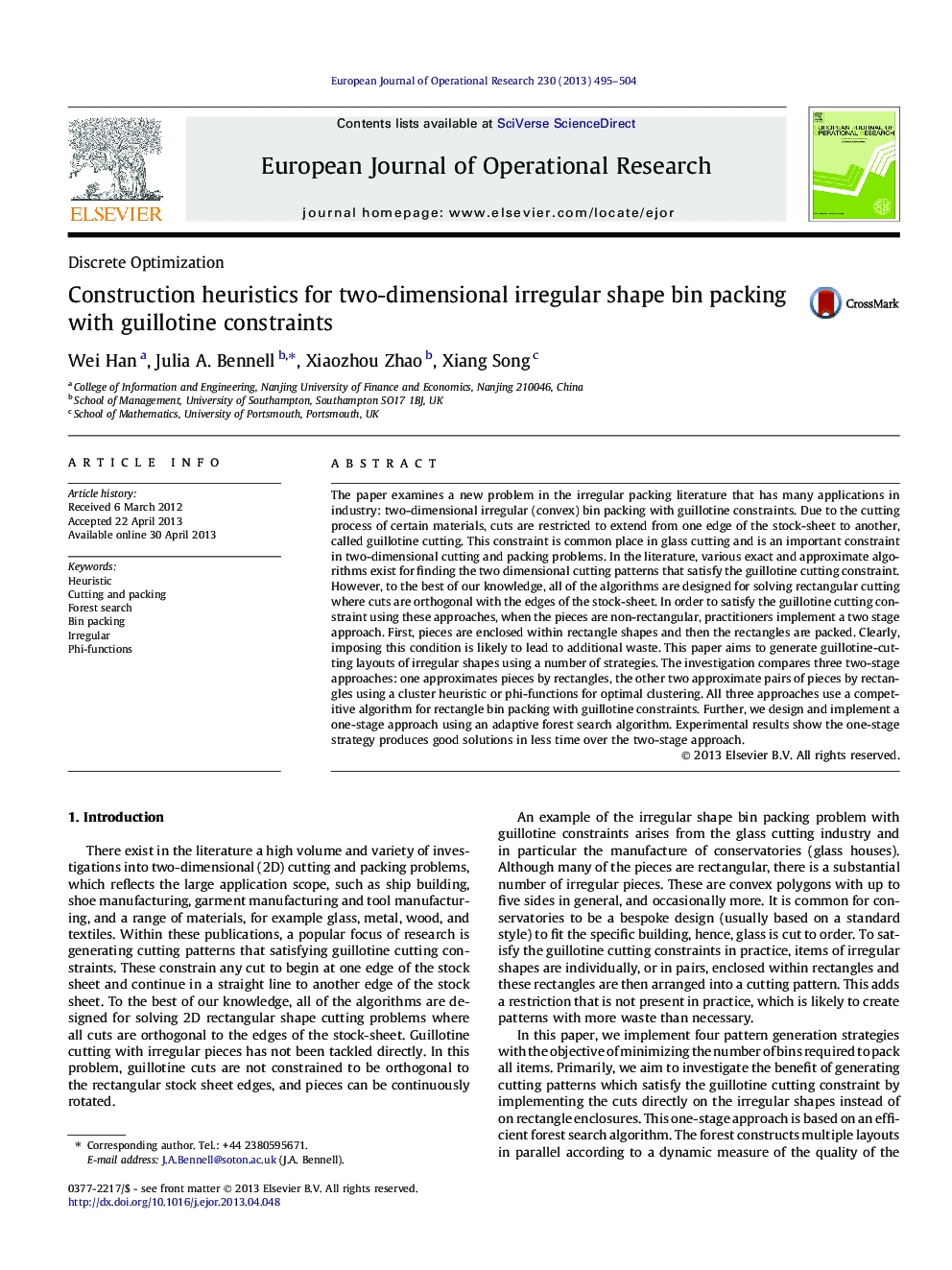| Article ID | Journal | Published Year | Pages | File Type |
|---|---|---|---|---|
| 6897813 | European Journal of Operational Research | 2013 | 10 Pages |
Abstract
The paper examines a new problem in the irregular packing literature that has many applications in industry: two-dimensional irregular (convex) bin packing with guillotine constraints. Due to the cutting process of certain materials, cuts are restricted to extend from one edge of the stock-sheet to another, called guillotine cutting. This constraint is common place in glass cutting and is an important constraint in two-dimensional cutting and packing problems. In the literature, various exact and approximate algorithms exist for finding the two dimensional cutting patterns that satisfy the guillotine cutting constraint. However, to the best of our knowledge, all of the algorithms are designed for solving rectangular cutting where cuts are orthogonal with the edges of the stock-sheet. In order to satisfy the guillotine cutting constraint using these approaches, when the pieces are non-rectangular, practitioners implement a two stage approach. First, pieces are enclosed within rectangle shapes and then the rectangles are packed. Clearly, imposing this condition is likely to lead to additional waste. This paper aims to generate guillotine-cutting layouts of irregular shapes using a number of strategies. The investigation compares three two-stage approaches: one approximates pieces by rectangles, the other two approximate pairs of pieces by rectangles using a cluster heuristic or phi-functions for optimal clustering. All three approaches use a competitive algorithm for rectangle bin packing with guillotine constraints. Further, we design and implement a one-stage approach using an adaptive forest search algorithm. Experimental results show the one-stage strategy produces good solutions in less time over the two-stage approach.
Related Topics
Physical Sciences and Engineering
Computer Science
Computer Science (General)
Authors
Wei Han, Julia A. Bennell, Xiaozhou Zhao, Xiang Song,
